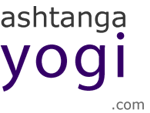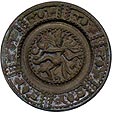
| HOME | MENU | EMAIL |  |
| articles / letters |
I Ain't No Doctor by Charles Pan Faris
If It Hurts, You Are Doing It Wrong
When he first began to teach yoga in the early 70’s, David Williams was told that the “the worst thing is to be a charlatan yoga teacher.” And so, whenever he leads a workshop for teachers he begins with a two and a half hour talk on how ashtanga yoga should be taught.
“If it hurts, you are doing it wrong.” This is the first thing David tells us on the evening of May 1st at O2 yoga in Somerville, as he begins his four day, 12 hour ashtanga yoga intensive. David’s stated goal as a teacher is to help his students get a daily practice that will carry them into their 80’s and beyond, to help them find a way to do their yoga so that it feels good and they “want to do it tomorrow”.
“Most of your life,” he says, “you will be doing yoga by yourself,” the yoga studio primarily being a place for learning your yoga while still occupying the demographic of young, single, living in the middle of the city, full of expendable income and not yet weighed down by children and the 9 to 5. Noting that White Lotus yoga’s Ganga White calls himself a ‘hedonic engineer’, David figures that the only way anyone will make yoga a lifelong pursuit is if they get this key secret: yoga makes you feel good!
Yoga is also about increasing prana, an Indian concept of healing energy not too unlike the Chinese concept of chi, and pain does not increase prana. One millimeter beyond stretching is tearing, he says, and yoga is about micro-sculpture, balancing, where there is no benefit in getting injured. “I want yoga to be cheap thrills,” he says. “You should get exhilarated each time you do it.”
David’s recipe in this regard is placing foremost concentration and focus on the moola bandha and the ujjayi breath, both of which will increase prana and lead first to getting healed, yoga chikitsa or yoga therapy, and then onto cheap thrills and a recharge. “You gotta do it,” he says. “And you gotta do it every day,” which in David Williams-speak means six days a week, always taking the same day off, and no yoga on the practice day nearest to a new moon or a full moon. This means that in an average thirty day month a daily practice would entail between 23 and 26 practices.
In addition to moola bandha, ujjayi breath, and daily practice, David recommends a consistent time of day for practice. Then, if your practice feels extra good, you can ask yourself what you did during the last 23 hours that may have led to that. And, if your practice feels extra tough, you can ask the same question. Eventually, once you discover what you are doing that hinders your practice (and thereby your daily feel-good and cheap thrills), “You’ll either drop your habits or you will drop your yoga.”
Following his notion that pain prevents gain, David describes an asana as a firm comfortable posture from which you can stretch from in to out, breathing yourself loose. If you make your practice a moving meditation like tai chi you can let the constant repetition bring about your change gently over time, creating the peace of body which allows for peace of mind. The ancient dictum that “Yoga is cessation of the fluctuations of the mind” becomes, in David’s North Carolina translation, “Yoga is all about stopping frettin’”.
As a teacher who hopes to instill fascination as opposed to discipline, David recommends that his students all begin with a 30 day commitment, during which they begin with abdominal lifts and nauli as well as a cleansing diet (see last April and May archives) and detox to scrub the intestines “down to the pink”.
Next up David has his students practice their moola bandha while sitting down, followed by sun salutations A & B, finishing with lotus, lifting lotus, and shavasana, or corpse pose, which he claims is the most important part of the practice. This emphasis on cleansing and detoxifying also relies heavily on the notion that a person will probably inhale as much oxygen in their hour of practice as they will during the other 23 hours of the day.
David then offered up his description of how to determine who is the greatest yogi in the room -- definitely a vital topic in a roomful of practicing ashtanga yogis! And before we get to that, while you picture yogis and yoginis lifting themselves up into handstands with their pinkie fingers, legs moving from lotus to baddha konasana and back again, a few of my favorite David Williams quotes:
“Yoga will save your life.”
“Yoga is for everybody, blind, crippled, or crazy, nine to ninety.”
“Get your jam up and let your prana heal you. Who knows what will happen.”
“The ultimate yoga would be like doing tai chi in handstand.”
“Yoga is for liberation! I’m not holding anything out for the next workshop!”
“The tortoise wins the race. Make it like a fifty year goal.”
“The guru is the one who lights your candle, the one who flicks your switch.”
And my fave David Williams quote attributed to Pattabi Jois: “Yoga will cure everything except problems created by yoga.”
So then, look around the room, and rather than noticing the strength, flexibility, stamina, or grace of the folks sliding from backbend to handstand and back again, notice what is happening in the breath, in the energy levels. It’s a bit of a baby bear thing here, not too hot, not too cold... “The yogi who is charging, the yogi who does what is appropriate for that day...this is the greatest yogi in the room.”
So, how can you practice yoga if you are injured? Step it back...no pain! If you are immobile? Start with moola bandha and breathing. If you are sick? Start with the sun salutations, doing three of each and then getting in bed and covering up to hold in the warm healing prana. Repeat throughout the day.
Whew! At this point David has been talking for a long time. Information overload is setting in. And yet...he ain’t holding anything back for the next workshop! His enthusiasm and fascination with yoga are palpable, and he’s got a few more important topics to cover, the first being the idea of symmetry. It’s an aim, he says, and there are two ways to approach it outside of your yoga practice. One is to try doing everything symmetrically, from sweeping the floor to brushing your teeth and cutting veggies for dinner. The second is to get as much bodywork as you can; structural integration, massage, Thai massage (which is like passive yoga that someone does to you), Turkish baths...you name it.
And then he’s trying to wrap it up... “Just don’t forget what your goals really are...it’s the peace of mind.”
“Kundalini is ignorance,” and yoga is for releasing the ignorance.
“Stress is energy that’s jammed up,” and yoga is for getting the nervous system straight, and for strengthening the nervous system.
And just a few more things! Yes... “Say what you mean and mean what you say (think twice)!”
And a tiny blurb on diet: “Eat less,” and “Find what serves you.”
And guess what...David takes advil, with food. And he does lotus on both sides, and says it’s okay to skip vinyasa between sides!
And then it’s time for questions, and the folks who’ve had to struggle to keep quiet for 150 minutes (practicing jalandhara bandha perhaps?) have their hands high in the air and I’m out the door into the fresh air, head swimming, glad I spent enough time in school to learn how to take good notes, grooving on the sudden quiet of the night and intent on applying that human league attitude to my future yoga endeavors: “Keep feeling fascination/Looking, learning, moving on.”
HOME | PICS | BIOG | EARLY YEARS | CALENDAR | LETTER | ARTICLES | GUESTS | FORUM
Copyright 2004 David Williams
Site Last Updated: